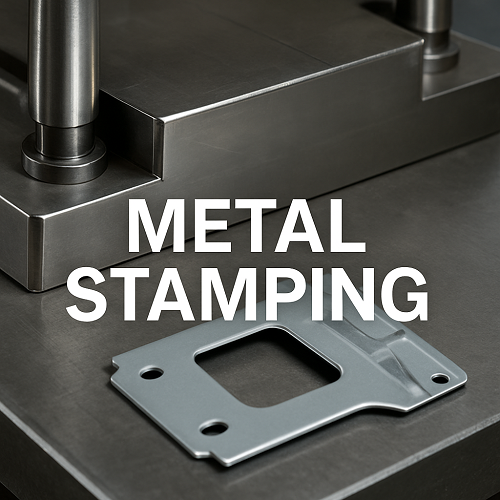It depends — but for many applications, metal stamping is one of the most cost-effective ways to make high volumes of precision sheet-metal parts. Whether it feels expensive hinges less on the per-piece cost and more on the project specifics: tooling and setup, part complexity, material choice, and production volume.
Why people say “it’s expensive”
When buyers first hear about metal stamping they often react to two headline items:
- Upfront tooling and die costs: Designing and building stamping dies (especially progressive or transfer dies) requires skilled engineering and precision machining. That initial investment can be noticeable compared with a simple machined prototype or a 3D-printed sample.
- Perceived minimums: Because tooling is an investment, stamping is commonly associated with medium-to-large production runs; some assume that means minimum orders they can’t meet.
Those realities are true, but they’re only part of the picture. Tooling is an investment that buys speed, repeatability, and very low per-unit costs once you’re running.
What actually drives price
Here are the main factors that consistently affect the cost of a stamped part:
- Tooling & setup: Complexity and precision requirements increase die cost and setup time. Dies for parts with many operations or very tight tolerances cost more.
- Material selection: Different metals (stainless steel, brass, copper, aluminum, high-strength steels) and sheet thicknesses carry different raw-material costs and sometimes require special processing.
- Part complexity & tolerances: More features, small radii, and tighter dimensional tolerances raise die complexity and inspection requirements.
- Production volume: High volumes amortize tooling quickly — lowering the per-piece cost. Low volumes mean tooling cost is spread over fewer parts, so per-piece price is higher.
- Secondary operations: Piercing, bending, heat treatment, plating, coating, deburring, and assembly add to total cost if they’re required after stamping.
- Quality & inspection: Regulatory or industry certifications, traceability, and rigorous QA add time and cost, but they also reduce downstream risk.
- Lead time & logistics: Rush orders, expedited shipping of raw materials, or special storage/handling can increase prices.
Where stamping provides the best value
Framed correctly, stamping’s strengths are compelling:
- Extremely low per-piece cost at scale: Once tooling is amortized, cycle times are fast and labor per part is low — ideal for automotive, appliance, electronics, and many consumer products.
- High repeatability and precision: Stamped parts can be produced with consistent dimensions across millions of cycles, reducing assembly headaches and returns.
- Integrated functionality: Stamping can create bends, holes, embosses, and latches in a single process, reducing secondary assembly costs.
- Material efficiency: Sheet utilization tends to be better than some other processes, and scrap metal is typically reusable.
- Speed to production: With the right setup, stamping delivers large volumes quickly — important when customers need steady, predictable supply.
Metal stamping can look expensive at first glance because of upfront die costs, but its real strength is turning that initial investment into fast, repeatable, and extremely low per-unit cost production. For medium- to high-volume parts — and for any design that benefits from integrated features and reliable tolerances — stamping is often the smartest economic choice.

